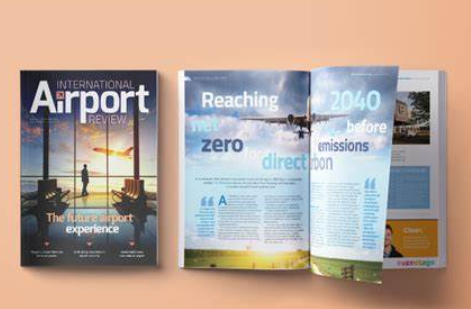
September 4, 2024: In November, airport professionals will arrive en masse in Amsterdam. It’s the location for the sector’s biggest annual event – the International Airport Summit.
At the summit, our airports specialist, David Elliott, will be contributing to a ‘fireside chat’.
Ahead of his appearance, he wrote for September’s International Airport Review:
The Paris ’24 Olympics has finished but in the airport sector records are still being set. London Heathrow saw off competition for the busiest airport in Europe in H1. Before July 2024, it had never surpassed 1.8 million passengers for one week – but then beat the tally for three consecutive weeks.
If anything gives a clear indication that the impact of lockdowns and restrictions are now a distant memory, these figures are it.
With those most challenging of four years behind them, airport operators globally are re-focused on their business-as-usual areas: Strengthening their operational resilience, delivering the highest-quality passenger experience, driving efficiencies, investing in asset enhancements and capital projects and reducing carbon emissions.
Their approaches will vary but my 25 years of experience supporting major airports with digital programmes has taught me that any masterplan for responding to each of these areas must have one aspect at its core: data.
Drowning in data?
The amount of data produced by businesses doubles roughly every two to four years. Airports have multiple sources of data at their disposal – everything from passenger flow and baggage performance data to asset maintenance and customer satisfaction data.
But having a ready supply of data at your disposal is in itself of no use. Its value lies in being able to identify and combine the data that is most useful and that accurately represents reality to support your business goals. As Jonathan Rosenberg, former SVP of products at Google, famously said: “Data is the sword of the twenty-first century, those who wield it well, the samurai.”
The challenges of wielding it well are generally the same for all:
- Working with a vast different number of formats
- Ownership, quality and the source of the data
- Making it readily available and easily comprehensible to those who need it
- Ensuring that your team have the capability and required skills to work with the data
- Ensuring security of their systems and the data they contain, particularly following a global escalation in malicious activities.
These areas will form the thrust of my conversation in November when I join a fireside chat at the International Airport Summit in Amsterdam. Hearing about the theory and best practice is very different from the practical reality. To that end, I’ll be referencing the stories of some of the major airports we have worked/are working with at Cohesive and Bentley, to help them achieve their visions through more effective data management.
These include Sydney Airport, whose data initiative saw them named winner of the Cities & Campuses category at the Bentley Going Digital Awards 2022 (see image of the team receiving their award from Bentley, top of page).
Sydney wanted a tighter hold on the complex data which had been scattered across different business units and stored in varied databases and systems. The airport’s teams were frustrated by the need to find relevant plans and documents, print them and collate them for each job. Also, to meet corporate and regulatory requirements, the airport’s design team had to update documents monthly, with their time being consumed with generating dozens of complex maps and facility drawings.
The airport’s spatial services team, comprised of architects, civil engineers, airfield designers and others came up with a plan – to create a cloud-based ‘self service’ portal where any user could access relevant information quickly and easily and which could handle future integrations.
The team selected Bentley’s iTwin Experience to enable them to integrate financial and asset data and metadata, models and documents from multiple systems and to help create a reliable, overall picture of the airport infrastructure.
By collating the data and making it readily available, the ‘Maps@Syd’ initiative is helping Sydney to increase efficiencies and improve productivity. In 2022, around 200 users were using the system. Kim Cohen, the project team leader, said that if these users accessed the platform just once a day that would save 5,280 hours a year.
The airport, one of the world’s oldest, is now on course to become one of its most advanced in its approach to asset management and maintenance, through its ultimate vision of creating a live digital simulation of its entire 906 hectares site.
Other examples I’ll reference in my summit fireside chat, will be Heathrow. Heathrow was an early champion of data and its importance in successful airport operations with its then Digital Director, Jon Kerbey, (now Regional Managing Director – EMEA at Cohesive) saying in a 2021 interview that “data is as important – or more important – than our physical assets.”
It is now taking steps to ensure that its strategy puts it at the front of the pack. We’ve worked with the airport to produce a two-year action plan identifying how it could enhance its digital delivery, looking at areas including the completeness and quality of information at the handover stage of capital project delivery.
With high-quality, trusted and secure data fuelling their operations and capital programmes, airports globally will position themselves to smash their goals and go for gold.
For more news about our activities, visit our LinkedIn page.
To contact us, please supply a few details below:








